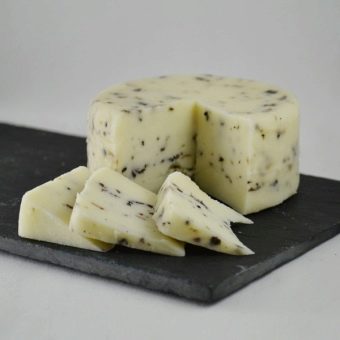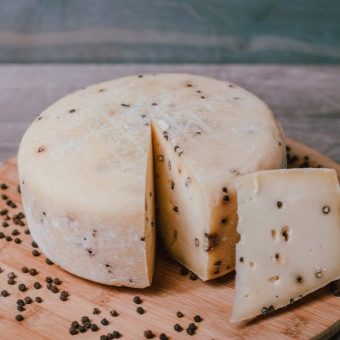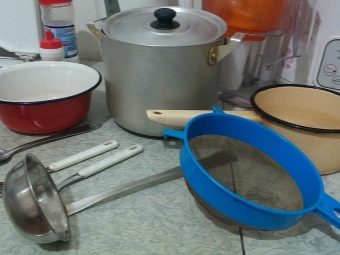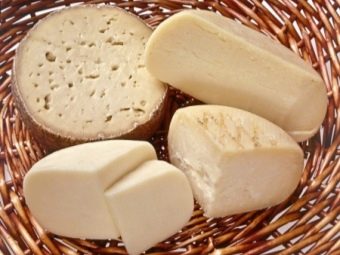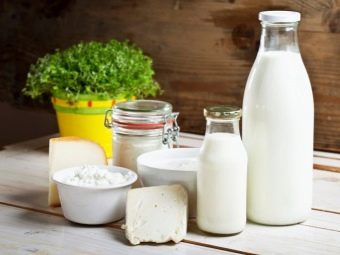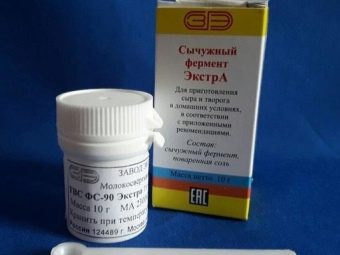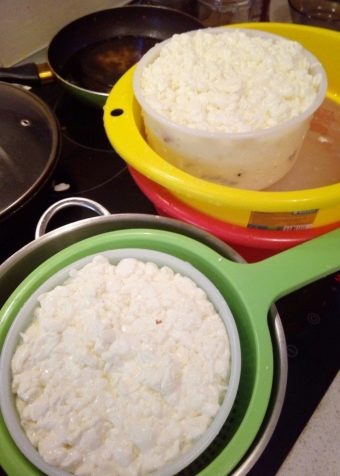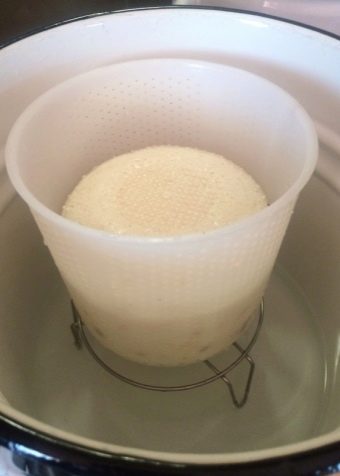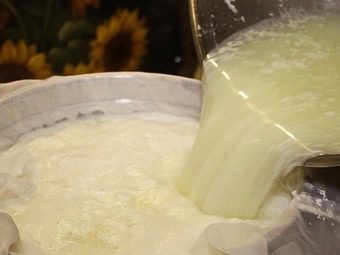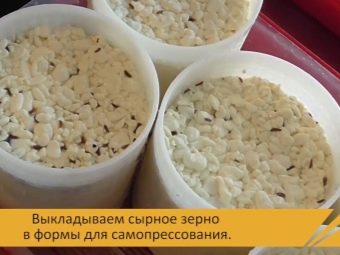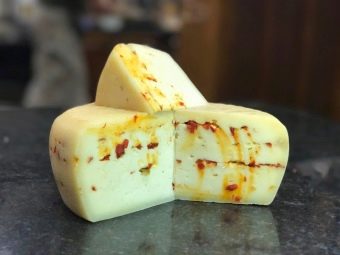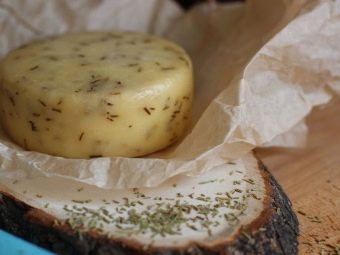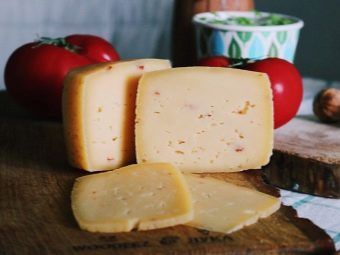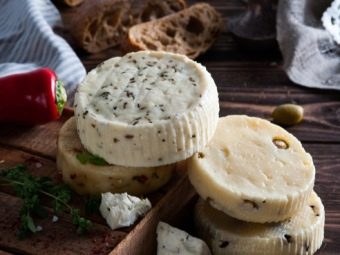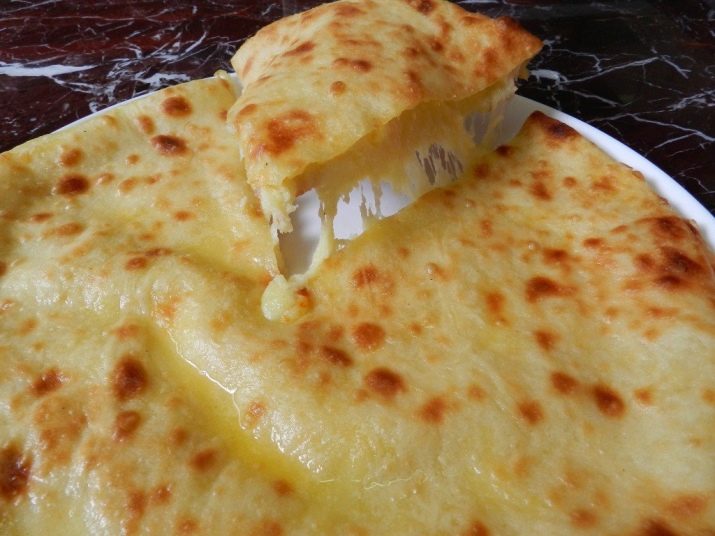Recipe for cooking Kachotta cheese at home
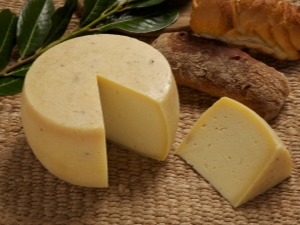
In this article we will talk about how to cook the famous Italian Cachotta at home without much stress.But first, let's talk a little about the cheese itself.
What?
The name Caciotta itself comes from the Latin Cacio, which means "cheese." According to legend, Michelangelo himself loved him very much, however, there is no documentary evidence of this. In fact, this fresh young cheese, which can be easily made at home, was invented by historical standards relatively recently, at the beginning of the XIX century. And the inventors were not monks or cooks, but ordinary Italian shepherds, for whom cheese along with a flat cake was the staple food.
For them it was important that the product complied with the following conditions: ease of preparation, the absence of a pronounced aroma and the presence of fresh taste. The latter is especially important in the conditions of hot summer pastures, when it is necessary to back up forces and at the same time not burden the stomach with something heavy and salty (and it is these that were mainly traditional cheeses). Over time, Kachotta gained recognition from lovers of traditional cuisine, easily fitting into modern standards of healthy eating.
In order to cook cheese with or without additives at home, ferment is necessary. You can buy it. Now there are many variants of this cheese, for example, Kachotta with sage, oregano, basil, saffron and even wine. However, here we offer the most traditional cooking recipes with minor deviations from the original version. Necessary kitchen utensils:
- large stainless steel saucepan;
- one large (about 500 g) or several small containers for future cheese (they can also be replaced with cake molds or even yogurt baths);
- a milk thermometer or an ordinary liquid food thermometer sold in hardware stores or large supermarkets;
- narrow strainer;
- skimmer;
- long plastic or glass container with a lid (for brine and primary maturation of the product);
- wicker basket (for cheese storage during its ripening).
Selection of ingredients
In the original recipe, only sheep's milk was used, but nowadays goat, cow, and even buffalo, and in some cases a mixture of different types of milk are used in the manufacture of Kachotta. For example, the Tuscan version of Kachotta provides that it should be 85 percent cow's and 15 percent sheep's milk. Therefore, the scope for fantasy and experiments here is quite wide. The main condition is that milk should be unpasteurized.
CURIOUS FACT. Some traditional cachotta use natural dyes. One of the most famous types of such cheese in this respect is the Siensky Cachotta. To make it red, fresh tomatoes are now added to the cheese mass. In the 19th century, shepherds used lamb blood for this purpose.
The ingredients for Kachotta are:
- 5 liters of milk for cottage cheese and 0.75 liters of milk for cheese mass;
- liquid rennet (can be purchased in specialized stores or ordered online), while the dosage must be determined according to the instructions attached to the product;
- 320 g of salt;
- sunflower oil;
- white vinegar;
- 125 g natural yogurt;
- 3 tbsp. spoons of fermented whey.
Cooking process
The cooking process looks like this.
- Pour milk for cottage cheese in a saucepan and bring it to a temperature of 35 degrees. After that, add the yoghurt and stir gently. Turn off the heat and wait 35 minutes. Then put the pot back on the fire and bring the mass to a temperature of 38 degrees.
- Using a kitchen syringe, add liquid rennet enzyme, pre-dissolving it in a cup of water. Mix everything well and remove the lid from the heat. Wrap the pot in a cloth and leave the mass to ferment for one hour at room temperature. As a result, you should get a homogeneous cheese mass.
- After an hour, we begin to gently stir this mass with the help of a skimmer. If you stir quietly and for a short period of time, large granules should appear on the surface, you will get young fresh cheese. If you are going to make aged cheese, then the mass must be mixed very intensively and for a longer time in order to achieve small granules. After that you should proceed to the next stage - directly cooking the cheese.
- Put the pot on the fire and bring the mass to a temperature of 50 degrees (maximum - 60). During the cooking process, you will notice how the granules begin to separate from the liquid (the so-called whey). As soon as the liquid reaches the required temperature, remove the pan from the heat and pour the resulting mass into a strainer. To get more fluid, we advise you to slightly crush the mass with your hands. Then put the curd in a prepared container or mold.
- Place the container in the switched off oven or microwave with a cup of warm water. Thus, you will be able to achieve the temperature necessary for aging cheese at 25 degrees. Leave the mass to mature for 20 hours.
- From the remaining whey you can cook cottage cheese. Add 0.75 liters of milk to it and bring the mixture to a temperature of 90 degrees. During the cooking process, several milk bunches will appear on the surface. It should be borne in mind that the resulting amount of whey and milk at the output should be no more than 40 percent. Collect the resulting mass in a strainer and place in an appropriate container. As a result, you get a sweetish cottage cheese. As an option, you can save the whey for future cheese preparation. To do this, leave the whey in an open dish at room temperature for one day, and then put it in the freezer for storage.
- After the cheese has matured, dissolve 160 grams of salt in a liter of warm water and place a container of cheese in it for 2 hours so that it covers it completely.
- After this time, get the cheese and put it in a wicker basket, put it in a cool place or just in the fridge for the final maturation for 15-90 days depending on what taste you want to get - fresher or more seasoned. During the first week it is necessary to coat it every day with a brush previously moistened with a mixture of white vinegar and sunflower oil. This should be done in order to avoid mold. In addition, the cheese must be turned from time to time. As soon as the first week passes, attention can be relaxed. If, by chance, mold appears on the cheese, it will be enough to spray it with the mixture mentioned above, and everything will return to normal.
As a result, you should have a real home Kachotta. It is recommended to use it immediately after the end of the aging process. The caloric content of such a simple Kachotta is 350 calories per 100 grams of product. If you want the cheese to retain its freshness for several more days, then wrap it in parchment paper and pour it under running water. Once the water is drained, put the similarly wrapped cheese in the fridge. In this form, it can be stored for another three to four days. It is important to ensure that the paper is constantly wet.
CURIOUS FACT. The Sicilian variant of Kachotta, the so-called Kachotta degli Elimi, listed by the Italian Ministry of Agriculture as a list of protected traditional products, goes through a process of ripening in special caves at a temperature not lower than one and not higher than three degrees.
Finally
So, you got an idea of how to make a rustic version of this famous cheese. However, Italy would not be the country where pizza was invented if the same method (mixing and adding ingredients to a simple dish base) was not applied to cheeses. This fully applies to Kachotta. This makes it a truly universal product.And here the fantasy can be limitless. You can add almonds, truffles, walnuts, pesto sauce, dried tomatoes, onions, chili peppers to the cheese to give the product the flavor that you like best.
Most importantly, remember that any additional ingredients should be added to the product after the end of the fourth preparation phase, that is, the separation of the curd from the whey.
Universally and the use of this cheese. It can be eaten simply with bread (preferably homemade pastries), added to a variety of salads, as well as in a melted form in dishes cooked in the oven. It can even be turned into a very tasty and original dessert, adding honey there or, as the Italians love it, dipping cheese in onion or peach jam. And, of course, Kachotta can be eaten just like that, as a light aperitif, accompanied with a glass of light and soft red wine with a fruity aroma. Ideal for this would be "Chiro", "San Giovese di Romagna", "Merlot Friuli".
Since Kachotta is common in almost all regions of Italy, it is very difficult to choose any one recipe for this cheese that is popular throughout the peninsula. Therefore, we will offer a classic Tuscan recipe to the classic Kachotta.
Pie with Kachotta
Number - for 4 people.
Cooking time - 50 minutes.
You will need:
- 1 pack of breeze dough;
- 300 g fresh or dried mushrooms;
- 5 large pieces of Kachotta;
- 2 eggs;
- 200 g of bechamel sauce;
- salt and pepper to taste;
- a pinch of nutmeg;
- a pinch of thyme;
- pinch of basil;
- pinch of marjoram;
- 1 tbsp. spoon of olive oil.
Preheat oven or microwave to 200 degrees. While the oven heats up, start preparing the filling. Put mushrooms, herbs and peppers in a pan and fry them in olive oil over moderate heat for 5 minutes. It is very important in the frying process not to salt, otherwise the products will lose water. Cut Kachotta into cubes. From the dough breeze form an open cake with high sides around the perimeter. The bottom of the future cake must be poked several times with a fork.
In a separate saucepan, mix well the sauce bechamel, cachotta, nutmeg and two eggs, previously prepared mass of mushrooms and herbs, as well as salt and pepper to taste. Put the stuffing in the cake so that it covers the entire base. Align the sides of the dough and bend them a little inside. Put the cake in the oven or microwave for 25-30 minutes.
If you want to give this dish a bit of original flavor, then pour the cake with a small amount of olive oil with the addition of truffle.
Read more on how to make Kachotta cheese at home, see the next video.

